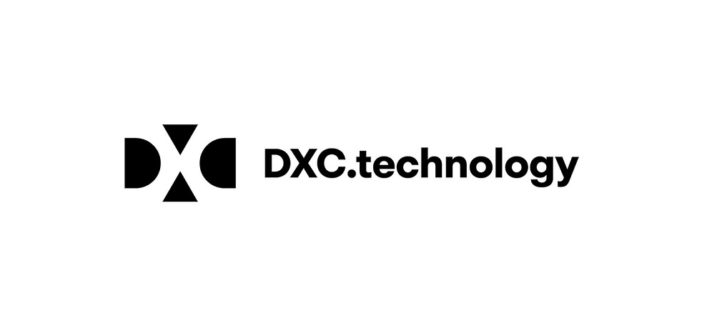
82% of organisations see technology as a key enabler to managing disruption
Businesses across Australia and New Zealand (ANZ) have adapted, invested, built resilience and planned for up to three years to recover from the disruptions of 2020 according to the findings of the 2020 Beyond Disruption Business Pulse study revealed today by DXC Technology and analyst firm Telsyte.
With more than 600 interviews conducted over an eight-week period, the study represents the views of Australian and New Zealand business leaders including CEOs, COOs, managers, CIOs, CDOs (Chief Digital Officers), and other technology decision makers across various industries and business sizes on their organisations’ experiences in dealing with disruption.
The study presents varying levels of optimism from ANZ organisations regarding managing the disruption and the road to recovery. The majority (86%) of large organisations believe they have managed the disruption well, compared to a lower proportion of small-medium enterprises (SMEs) (61%). Almost half (48%) of large organisations are confident they will fully recover by the end of the year, compared to just one in five SMEs. Generally, half of respondents (54%) believe it will take one to three years to fully recover, yet just 6% said it will likely take longer than three years to recover, showing a level of optimism amongst businesses overall.
To aid in this recovery, an overwhelming majority of organisations (82%) see technology as a key enabler to managing disruption, a number which climbs even higher (92%) for those with more than 1,000 employees. Importantly, two-thirds (68%) of organisations believe their technology investments have helped them manage the current crisis well. In addition, most organisations (80%) have “fast-tracked” their modernisation with technology, and more than half (54%) described themselves as now having fully embraced a ‘cloud first’ policy, whereby they aim to utilise cloud as much as possible within business practices.
“Australian and New Zealand businesses were compelled to transform almost overnight, and the majority rose to the challenge in an incredible display of resilience,” said Seelan Nayagam, managing director, DXC Technology Asia Pacific.
“Technology has been instrumental to enabling businesses in supporting a remote workforce and continuing to serve customers, but we have also seen an equally significant cultural shift take place. Many businesses that were once reluctant to transform or adopt flexible working policies have seen just how helpful these adjustments have been to manage the recent disruption. Now the paradigm has shifted, with businesses seeing technology as a gateway to productivity and cost efficiency to aid in their recovery,” Nayagam added.
The 2020 Beyond Disruption Business Pulse also revealed trends in terms of technology investment, cybersecurity, organisational culture, employee wellbeing, and data-driven decision making. Key findings include:
Tech spending on the rise during disruption
Organisations plan to increase technology spending across the business by an average of 5%, an investment which climbs to 10% for those with more than 1,000 employees. This is similar to investment levels indicated by technology decision makers in the Telsyte survey conducted in December 2019. Business leaders indicated the most important technology investments for the next 12-months to be workplace modernisation (75%) and cybersecurity (66%), in addition to data analytics (72%), cloud (68%), and modern business applications (66%). A silver lining in the current disruption is that 85% of organisations now feel more open to new and emerging technologies.
Increased focus on employees over customers when it comes to transformation
With organisations now managing a remote workforce, the majority (67%) have admitted the focus of their transformation efforts will be on employees. This marks a significant swing from 2019, when 61% claimed transformation efforts were focused on customers. Over 70% of large organisations have launched mental health programs, and personal development training to help build staff resilience. In terms of recovery, improving wellbeing programs (70%) and increasing skills and training programs (59%) are amongst the top business priorities in the next 12 months
Productivity on the rise as working from home and multidisciplinary roles the new norm
In 2020, 44% of organisations allowed the majority of their staff to work from home compared to only 7% in previous years. This number rises to 65% for larger organisations with more than 200 staff. In addition, almost three quarters (73%) have expanded the responsibilities of employees, with many embracing multidisciplinary roles. As a result, half (52%) of respondents said they have cultivated a culture of productivity due to the current disruption, and three in five expect to see increased productivity in the future, a silver lining as a result of the organisational changes made to manage the recent disruptions.
Cybersecurity a top business priority, putting pressure on improving training and process
Nearly half (49%) of organisations are seeing an increase in cyber-attacks, yet only 33% are offering cybersecurity training for staff. In terms of recovery, the top business priority for organisations in the next 12 months is improving cybersecurity (79%).
Data and analytics a key focus for organisations
Organisations have identified the most important technology investments for the next 12 months to be workplace modernisation (75%), data analytics (72%), cloud (68%), cybersecurity (66%), and modern business applications (66%). Respondents are focusing on faster and easier access to trusted data for better decision making (54%) and improving the analytics capability and data literacy skills across the business (46%).
“It’s been a turbulent year with constant changes, making it difficult for businesses to predict the future,” said Foad Fadaghi, managing director of Telsyte. “The findings from this study, conducted over an eight week period, has provided a pulse check on the sentiment of ANZ business leaders, highlighting their challenges and learnings. It’s evident that technology will be critical, with cloud, analytics, cybersecurity and employee experience front and centre on the road to recovery.”
Download the full report





